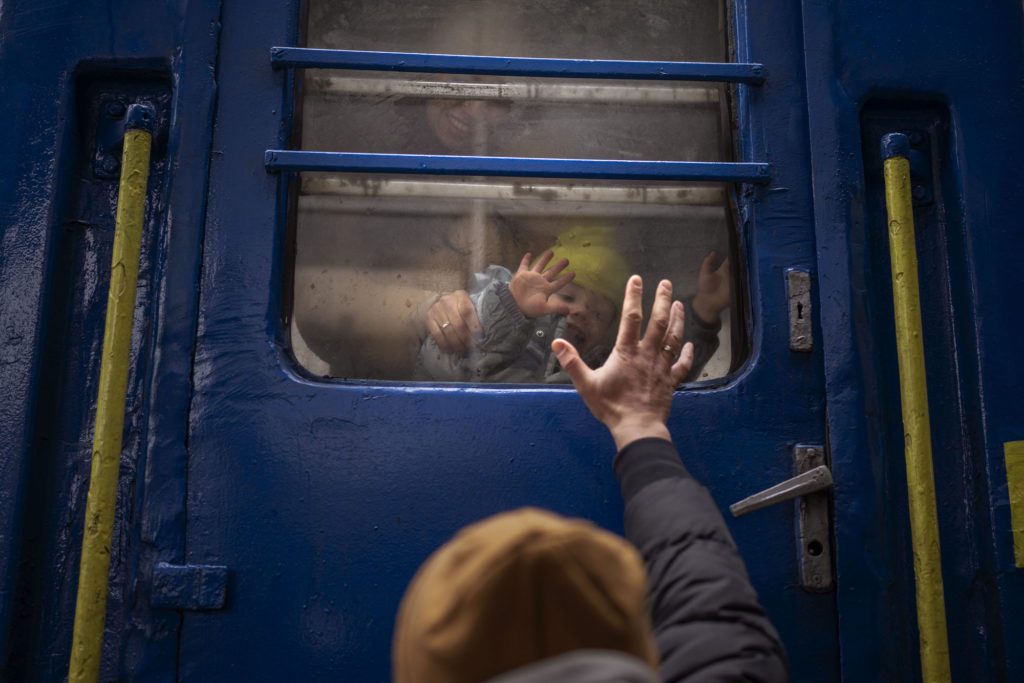On October 25, Ukrainian Deputy Prime Minister Iryna Vereshchuk appeared on national TV and addressed the refugees who fled the country after Russia’s full-scale invasion of Ukraine. She urged them to stay abroad if they can and not come back home before winter. Ms.Vereshchuk stated that the embattled country needs to “survive the winter” and that the energy system will “simply not cope” if people decide to come home. On October 18, President Zelensky announced that half of the country’s energy infrastructure was destroyed due to the Russian bombardment. These recent announcements from Ukrainian authorities mark eight months since millions of people had to forcibly leave the country and find new homes around the world, mostly in European countries.
Uncertainty about the future and help from around the world
Since the Russian invasion of Ukraine in February, the UN’s refugee agency has recorded about “7.7 million refugees from Ukraine living in Europe, including Russia, out of a population of about 44 million”. According to the agency, “approximately one-quarter of Ukraine’s total population left Ukraine for safer European nations, with 90% being women and children.” They left the country mainly by crossing the border to Poland. Countries that welcomed the most refugees are Germany and Poland, and more than one million Ukrainians were registered in each. Other countries with a high number of Ukrainian refugees are the Czech Republic, United Kingdom, Turkey, France, Italy, and Spain.
In the first months of the invasion, trains with hundreds of refugees arrived at the train stations in nearly all European cities daily. Nevertheless, Ukrainian men between the ages of 18 and 60 are still prohibited from leaving the country under martial law declared in the country. This causes families to be separated for an indefinite amount of time, as well as leads to psychological damage for many people involved. Additionally, it is crucial to note that many Ukrainians were displaced within the country and could not immediately cross the border due to the chaos and crowded railway stations in the country.

Photo by Emilio Morenatti of AP Photo
In light of the tragic circumstances millions of Ukrainians endured, the international community is responding by lending a helping hand. Many European countries and their citizens tried their best to provide as much help as possible and make refugees feel safe again. Temporary shelters and refugee camps were created in all European capitals and citizens collected first aid and came every day to volunteer. “The EU has granted Ukrainians the automatic right to stay and work throughout its 27 member nations for up to three years”, BBC News reports. This is so far the most substantial assistance program conducted by member states with regard to Ukrainian refugees.
Governments of many countries, for instance, Germany, made social payments and offered workplaces for those Ukrainians who were able to work again. Belgium also decided to support countries neighboring Ukraine that accepted the most refugees. For instance, Poland and Moldova asked for additional support and the Belgian government responded by allocating 2.1 million euros for this purpose. In addition, refugees were helped not only at the official state level but also through fundraisers. For example, the Dutch people and their fundraising campaign Giro555 have raised more than 160.8 million euros for Ukrainian refugees.
Forced travel through Russia on the way to safety
EU countries showed their great support from the very first days of the war and welcomed millions of Ukrainian refugees, but many of them were forced to first cross the border with Russia. For millions of Ukrainians, Russia is the aggressor state who brutally attacked their motherland. By the end of October, more than two million Ukrainians had crossed the border with Russia. How did this happen?
Many refugees did not choose to be sent to Russia, but the circumstances of the war gave them no other option. Almost all of the refugees had to go through so-called “filtration camps” where they were asked about their life in Ukraine, their opinion of the Russian president, and their thoughts about the “special military operation” (how Russian authorities refer to the war in Ukraine). The majority of those who left the camps tried to escape Russia and go to neighboring countries like Estonia, Latvia, and Finland. Many refugees do not have a place to sleep or food to eat. What makes their situation even more difficult is the Russian climate. By the end of September, nights are already extremely cold and people are forced to sleep on the ground.
On top of freezing temperatures, refugees have to endure complicated bureaucracy and bad treatment. Many of them were threatened in filtration camps, and some had their Ukrainian passports taken away in exchange for Russian ones. Apart from that, the Russian side promised to pay 10,000 rubles ($170) for each Ukrainian refugee, but the money does not always reach the recipient. In the worst cases, refugees have to wait for weeks before they can cross the border and finally feel safe. There were situations in which border guards let people of other nationalities ahead of Ukrainians and that is why many volunteers currently work on the border from the Russian side, to help refugees as much as they can.
What is next?
The war does not appear as though it will end soon, as indicated by the refusal of President Zelensky to conduct peace talks with President Putin and the continuous Russian attacks on civilians in Ukraine. However, 5.5 million displaced persons have returned to their homes with around 10% of them coming from abroad. Nevertheless, the refugee crisis in Europe is still at its highest. Ukrainian refugees abroad have started to assimilate, find jobs, and send children to school, however, the majority of them express a strong desire to return home as soon as possible. According to a study conducted by “Rating”, one of the biggest Ukrainian non-governmental and independent research organizations, “24% of respondents want to go home but will wait a while, 48% want to go home after the end of the war, and only 8% said they would not return home.”
Ukrainians have different views on the outcome of the war. Some expect a breakthrough and counterattack by the Ukrainian army any minute, while others do not make such optimistic predictions and are trying to get used to their new home and love their surroundings. One such example of the latter mentality is demonstrated by Olena from Kyiv. She and her family were forced to leave their homeland and move to Spain in the first weeks of the war. Now her daughter goes to a Spanish school, her husband works, and Olena herself is actively learning Spanish and getting used to the local lifestyle. She is often surprised by Spanish traditions, such as late dinners and the Spanish relaxed attitude to life, but she is getting used to the way of life over time. Yet, no matter how comfortable and relaxed life feels in Spain, Olena still thinks daily about when she can return home to Kyiv.
Featured image by: Omar Marques / Getty Images






